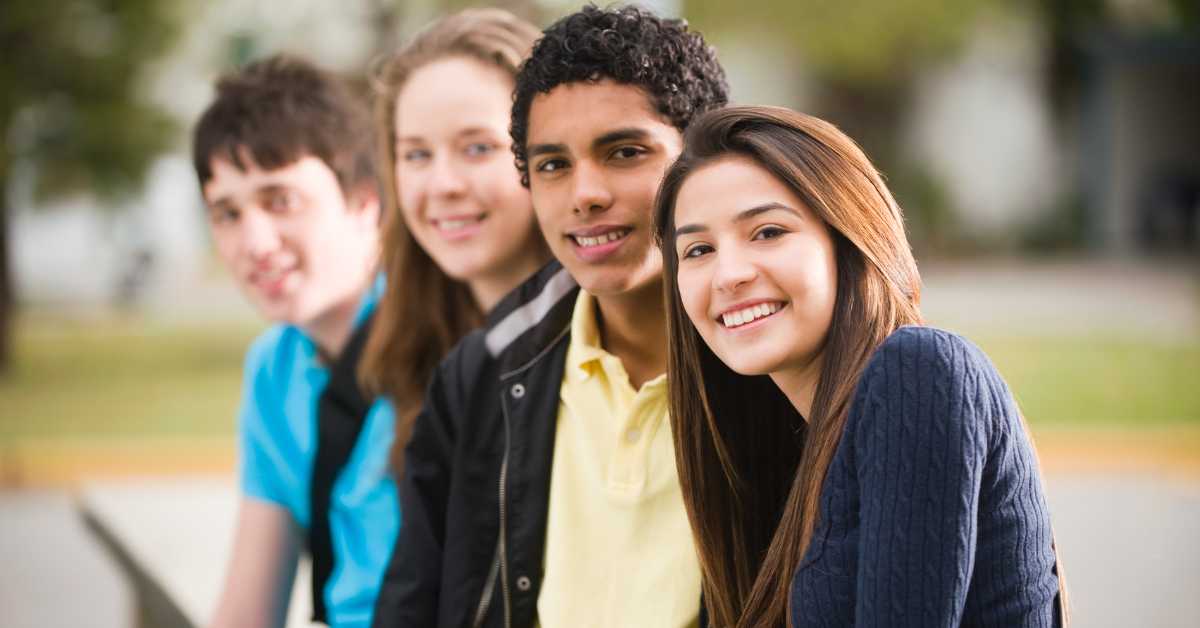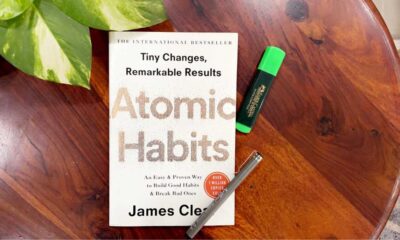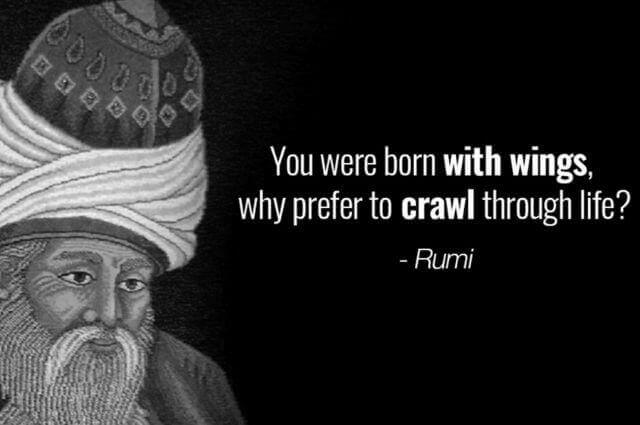Mindfulness
Mindfulness Exercises for Teens

Teens are full of energy, hope, and strength. They think differently, big, and limitless. With them, they bring the power to change, the courage to do things and the determination that it can be done.
They have this incredible skill to adapt to new things, people, thoughts, ideas, and ways of living. The power of being able to adapt is the key to the success in the new age. On the other hand, teens are going through a lot of changes in society.
What we have witnessed in the last two decades, takes about 200+ years and many generations to digest it. Call it the spread of the internet or digitization, the rise of social media, News overdose, new trends in Music/Media, or Choice overload, things have changed rather too quickly for us to react mindfully.
Life does not exist in the past, neither it exists in the future, It is only now – the present moment where life exists. And mindfulness takes you there.
Mindfulness exercises are activities that will help a teen to be more centered, more at peace, and be in the Present.
Research shows mindfulness also helps with self-esteem, decision-making skills, a strong immune system, and being more productive in life. The mindfulness exercises for teens are specially designed to help navigate uncertainty, imposter syndrome, relationships, career choices, and balance academics and well-being.
Mindfulness exercises for teens:
Below are 14 mindfulness exercises for teens. Some are meant to be done in solitude and some with a group. A group can be a group of friends, or your siblings or cousins; whatever works for you really. Start with something that needs small effort from you and then slowly build other mindful activities from the list.
1. Mindful Breath (Yourself)
Mindful breathing is one of the most powerful things that you can do. ‘Prana’ is a life force. It is Prana that has manifested itself in so many different forms around us: Humans, animals, trees, rivers, mountains, Suns, Moons, etc. You can not directly access Prana. It is through breath you can gradually experience it, Hence the term ‘Pranayama’ in Yoga. Breath is also very intimately related to our emotions.
We get angry, we breathe faster; when we are in control of our breath, anxiety is also under control. The continuous practice of mindfulness breathing brings us to the present moment, it gives us that pause to react to the situation. No amount of words will do justice to this particular benefit of the mindfulness breath. You try it and see if for yourself.
How to do it?
- Sit straight. on the floor or on a chair – back, chest, and head in a straight line
- Keep your hands on the thighs, and palms facing the sky.
- Breathe in for as long, slow, and as deep as possible. Breathe in the lungs. No other part of the body takes oxygen directly, just the lungs.
- Hold for as long as you comfortably with.
- Breathe out, again, as slowly as possible.
- This one breath should take 30 seconds to a minute. Over time you will see your capacity increase.
- During the entire process, focus on your breaths.
Contrary to what you might hear from others, I will highly suggest you find a spot in your house or room, one set of clothes, and fix a time for this. Within two to three weeks, you will experience a miraculous change in yourself. You will be able to focus better, think clearly, manage emotions better, sleep better and generally will be happy.
2. 30 mins of solitude (Yourself)
Talk to yourself once a day, otherwise, you may miss meeting most beautiful person in this world. Spending time with oneself is the biggest boon to humanity. And it doesn’t cost us anything. When you are in solitude, you get perspective that brings understanding about yourself.
This understanding brings clarity about the people, our relationship with them, current situations, our goals, and the purpose of our goals.
It is a beautiful time to plan your day or week. And also premortem on what could go wrong. It really is a wonderful thing to sit just by yourself for 30 minutes (usually an hour, but start with 30 mins).
How to do it?
- Find a time that works for you. Mornings generally are better; when the Sun is rising, birds are heading east. It is just a beautiful time, very conducive for these thoughts.
- Sit with a cup of coffee or tea or just a glass of water.
- A good habit would be to focus on deep breaths for the first five minutes.
- Think about what you have to accomplish during the day or week.
- Visualize how the successful completion of the task will look like.
- Also think about what could go wrong, make a list, and next to it write down how will you mitigate it.
- This is one way of doing it. Another way would be to just think about a certain area of your life. For example a relationship or academics. with no purpose or intention, just be with that. Soon you will automatically find answers emerging.
We live in a world where we have time for all the micro-trends, hot takes, and news but for ourselves. Let’s give some time to this body and mind, the best companions that we have. Do this every morning and experience a change in confidence and self-esteem.
3. Nature Walk (Yourself / Group)
Someone, when I was very young, told me that spending time in nature is a one-way relationship. I asked how, to which the answer was “Nature – trees, rivers, lakes, and mountains only give. they ask nothing in return”. This thought stuck with me. I spent lot many years thinking about why these elements bring peace within. I will not go into the theory right now but know for sure spending time in nature will bring you closer to your Self.
Hikes, walks, or just sitting by the water all of this counts. This mindful activity can also be turned into a fun mindfulness exercise. you could also do it with your friends or family and on the way make up a game that everyone will like to enjoy.
How to do it?
By yourself
- Pick a route that you are familiar with or is marked properly.
- When walking, pay attention to the small details of surrounding nature. Sounds, trees, soil, branches, smell, wind. Be present.
- Once you are done, sit for a few minutes and reflect on how beautiful the experience was.
In a Group
- Make sure you are with a group that will generate good conversation. and is also safe to be with.
- In this case, if you can pick a route that is new (but safe). Spend time sharing what you observe in nature and how it makes you feel. Share these thoughts with each other.
- Once done, have a coffee or food together. There is something about having food together that diffuses the boundaries and brings people together.
4. Mindfulness Team Sports (Group)
Sports build character. Life throws punches and one has to find a way to live and navigate through it. Team sport, when understood from the fundamental level, is the same as school life, corporate life, and the general ups and downs of it.
Managing emotions is one of the strongest elements that this mindfulness activity teaches us. It also emphasizes at consciously building our physical fitness to meet the sport performance.
Have a couple of teammates or players, who help each other identify strengths and weaknesses while developing a methodology for their success, and who give feedback during and after the game.
How to do it?
- Pick a sport that you are good at.
- Find a group of friends and team members who are ready to give you genuine feedback.
- Understand and align on goals before the match. For example, notice emotional state, physical tactics, and techniques of each other.
- Share the feedback during and after the game. This depends a lot on what type of sport this is. In baseball, one has plenty of time to provide feedback during the game but not so much in basketball.
- Examples of emotional states are anger, revenge, aggression, or being calm, or perseverance.
This mindfulness activity also helps you to stay in present. Your focus is on your game, and whenever you have a split second to think, your focus is on your team member’s game, analyzing it. A powerful strategy to stay in present but also improve your emotional and physical state through sincere team feedback.
How to know if this is working? Simple, see if you are performing better or winning a few more games statistically.
5. Spend time with Elderly (Group)
We must consider ourselves fortunate if we are able to spend time with the elderly. It could be our grandparents, friends’ grandparents, or even a neighbor.
They have lived the life. Life sometimes gives us anxiety, and stress, and sometimes makes us ponder on finances, relationships, etc.; the elderly have gone through it all. Yes, technology, living conditions, and situations have changed, but human desires and emotions are still the very same.
Harvard Research showed the benefits of spending time with the generations above; of course, they took the business angle but the same applies to life. We learn from their mistakes, we learn what is coming next and then there are various ways to navigate a situation in life.
How to do it?
- If you live with your grandparents, then you will absorb all this automatically. No conscious effort is needed.
- If not, then spend time with your grandparents, and meet them in person if you can. If not, a phone call is also good. once or twice a week is what I will recommend.
- Ask them, how are they feeling. How are things? and Listen. Oh, the power of listening.
And If you have questions, simply ask.
What I noticed when I was with my grandparents is as if the time just pauses; they helped me see beyond the situation (or problem). In the big scheme of things, our problems seem like a small unwanted ad pop-up. Click Close and Carry on.
6. Gratitude Meditation (Yourself)
Before going to bed is the best time for gratitude meditation. Make it a part of your lifestyle to be grateful for the things that you have. Combine this with a routine, for example, every night before bed, which also will calm your mind down, help you sleep better, and help you be happy.
How to do it?
- Before bed spend 5 to 7 minutes with deep breaths.
- Focus on your breaths alone
- Now continue to breathe and think about all the things that you are grateful for in your life- family & friends, education, teachers, school, food on the table. the roof over your head.
- With every breath, think of each of the things (and more) that you feel grateful for.
Continue breathing and Repeat this a few times
The human psyche is evolved to compare things. It is very difficult to put a stop to it suddenly. When we show our gratitude for things that we have, it boosts the neurotransmitter serotonin and activates the brain stem to produce dopamine. The more we feel gratitude, positive and happier we become.
7. Mindful Media Analysis (Yourself / Group)
We are the product of what we consume. It not only includes what we eat, and drink but also what we hear, see, and whom we spend time with. The theme, content, and delivery of the content have changed exponentially in the last decade.
When you consume content, spend time critically analyzing the content. Do this for any new content you consume. Think from both sides of consumption: Creator and Consumer.
How to do it?
Whenever you consume any new content. think about the below questions
From creator’s lens:
- Why the creator chose this storyline?
- Why the creator chose these characters and what exactly the person trying to convey?
From Consumers lens
- How did this content make you feel?
- In what scenes you felt your emotions stirring up? Why?
- What did you learn from the content?
In the starting, you will do this mindfulness activity post-movie. But over time you will see you are able to evaluate the creator’s mindset as well as your own emotions in real-time. Depending on your comfort level, you can do this in a group. Initially, you might want to do this with someone whom you trust very much.
Similarly, do this for a piece of music and series as well. This will gradually start reflecting in real life as well: how different topics make you feel, and why. What kind of people do you get attracted to and which ones do you want to keep a safe distance from.
8. Two Books a year (Yourself / Group)
Reading mindfulness books is very useful. I am a big proponent of going deeper. We are unfortunately living in the hot-takes world, where everyone knows something about everything. We dig 3 feet and move on to dig at another place only to dig 6 feet. And we keep digging 100 holes but we don’t see water.
To find water we need to go 300 feet deep. And as ‘Sri M’ says the water table for Mindfulness is very low these days. We need to go deeper. I suggest reading only two mindfulness books a year but make sure you assimilate the knowledge thoroughly.
How to do it?
- Pick a book that aligns with your stage in the journey. Remember you not picking up a book you are rather picking up an author – the personality, the experience, the entirety of it.
- So do your due diligence. Someone who has walked the path before would be the best to follow. Someone who actually lives that lifestyle.
- When you have found the author and a book, don’t just read the book, assimilate it. Make this Your lifestyle.
- From time to time, measure your progress.
Sometimes to change one’s life, even one sentence is enough. you don’t need to read a hundred books, or blogs or listen to thousands of youtube videos. Find what works for you; once you have found that go deeper.
9. A Day with Yourself (Yourself)
This is the extension of 30 mins with yourself. Every month, spend one day just with yourself. As scary as it looks in the beginning, it is a powerhouse for mindfulness. It is like charging Tesla for one day and driving it wonderfully well for the next 29 days.
Find a place to go away from the city or town you are in. Don’t seek the most luxurious place, what you need is a place away from the concrete jungle or your routine environment. If you can find a place close to nature, nothing like it.
How to do it?
7:00 am – Wake up and morning routine
7:30 to 8:30 am – Breathing Excercise and Morning Meditation
8:30 to 9:30 am – Breakfast preparation and eating
9:30 am to 10:00 am – Intention Setting Journaling
10:00 am to 11:00 am – Journey to the Past
11:00 am to 11:30 am – Breathing excercises
11:30 am to 12:00 pm – Journey to the Past (Cont…)
12:00 pm to 1:00 pm. – Lunch prep and eating
1:00 pm to 2:30 pm – Mindful Walk
2:30 pm to 3:30 pm. – Gift of the Present journaling
3:30 pm to 4:00 pm – Meditation
4:00 pm to 4:45 pm – Health Conscious break (Coffee/tea /Snack)
5:00 pm to 6:00 pm – Paving your future Journaling
6:00 pm to 7:00 pm – Meditation and finish the day
10. Mindful Conversation (Group)
Mindful and sincere conversations are the foundation of any relationship. This goes for everyone you interact with, for example, your friends, family, teachers and anyone on day to day activities.
How to do it?
What does it mean Mindful conversations:
- No gossip. if you are not certain about your source, nether the accuracy of your information, restrain from talking about it. Also, encourage people to do the same.
- Talk in a positive way about others.
- Listen sincerely when you conversing. There are many hacks that will tell you how to make others believe that you are listening, for example, nod slowly, move your toes, etc. My suggestion would be to forget all that and just actually Listen to what the other person has to say.
- When you make any decision in the future, consider that person’s conversation in mind. This is how you actually “listen”.
Over time, mindfulness conversation will make you feel very confident about others. When you look and speak only positively of others brings about very subtle and yet very profound optimism in you.
When you genuinely take an effort to listen to others it changes their behavior toward you. A sense of positive aura surrounds you and is reflected in your body language, speech, and in actions.
11. Observe Nature (Yourself / Group)
We all are interconnected. Ancient yogis say that there is sameness in everything. They talk purely in a fundamental way about how the universe came to be, how we evolve, and how consciousness manifests in each of us.
We are talking about one layer abstracted from that. Observing nature: rivers, lakes, mountains, trees, flowers, animals, etc.
How to do it?
- Spend time observing animals. If you have a dog, spend time on how he or she loves you, cares for you and becomes happy to see you.
- These days plenty of stuff is on the television where you can see how even a deer mother will fight a lion for her young one. Mother’s love goes against the nature of deer.
- Sit in the green, watch the trees, watch the birds, they all are connected with us in much more profound ways than appear at the surface.
- Trees help and nurture other trees, their young ones when they are in trouble.
The Elephant whisperer, My octopus teacher and Fungi are few of the content that is worth watching.
When we observe elements that are more constant (mountains, rivers) and/or the ones which are deeply rooted in a sameness (mothers’ love for the young one) we feel peace, we feel connected to them from the core.
These observations make us experience that our whole existence is our part and that we are part of it.
12. Creative Activities (Yourself / Group)
Creativity is different for different people. For some people, it is music, for some writing, others find creativity in painting and so and so on. Whenever you are with your creative element, you become one with it. As if the time ceases to exist when you are painting, or practicing music.
How to do it?
- Understand what is your creative element. The element that takes you with it. For some people, music transports them and for some, writing does it. There is no limit to this, whatever works for you.
- Spend doing that at least once a month. If you could do it more often do it.
Make sure that you are not chasing perfection here. You are just letting YourSelf flow through it. - When you finish your creative exercise, observe how you feel. Do you feel happy and relaxed as if all the weight has been lifted off your shoulders? If this is how you feel, embrace this feeling.
Talk about being in the present moment. When you are in your creative zone, it is all you think about; your existence merges with that one note of a flute, one stroke of the brush.
Mindful creative exercises such as music, art, language, and writing can be done just by yourself or with a group of people.
13. Mindful Social Media (Yourself / Group)
As a teen, it is natural that you spend a good amount of time on social media. There is both a beautiful element to social media and there is an element that needs to be taken in control.
One thing I definitely will highlight here is in the good old days when we used to hang out with our friends, it was just our friends. Today it is big corporations through which you meet friends and acquaintances, and read the news. And every app company’s sole goal is to keep you online on their platform for as long as possible.
And you pay price for this. your mental health. If you feel social media has affected your mental health, take a step back and put certain discipline around social media usage. The below table should help you. List down all the social media apps that you have on your phone and answer questions one by one.
Questions
Does this platform add value to my life?
Yes – Keep
No – Delete
Does this platform make me doom-scroll?
Yes – Delete account/change feed
No – Keep
Does this platform make me spend more time on it than planned?
Yes – Delete/Put times
No – Keep
Do I compare myself with others after using the platform?
Yes – Change feed/Delete
No – Keep
Basic Hygiene with Mindful Social media
- Unfollow accounts that give you anxiety or negative thoughts
- Put a daily limit on the usage of social media
- No social media for the first hour of your day
- Wind down social media at least an hour before bed
- There are plenty of accounts that bring good news and positive news to your feed. Give them a follow to balance your feed.
Evaluate your mental health in about two weeks after doing this. You will see that you are more at peace, happier and confident about yourself.
14. Give Back (Yourself / Group)
This is my last activity in the mindfulness exercise for teens topic and arguably the most effective. There is something in human nature that in giving we find peace. My Spiritual Master used to say “In serving humanity, lies all the secret of life”.
How to do it?
- Whatever little you can do, do it and do it with full joy. It could be:
– Service of money,
– Service of time, - When you spend time with someone, have genuine empathy towards them. Think of how can you help. Sometimes simply being there is enough; sometimes helping with a skill, or giving feedback on something. Whatever you do give them your full attention at that time.
- A few kind words of admiration, appreciation, and hope goes long way.
- If nothing else you can offer, for now, a smile will do.
My experience has taught me that giving back to society is a win-win situation. It benefits both the individuals who give and society as a whole, making it a worthwhile and fulfilling activity.
All the above activities will help you tremendously in life. Your goal in life could be finding divinity already in you or achieving success in professional and personal life.
Whatever your life goals are, the above activities, practised consistently, will work like a miracle. Best would be to start with two or three and then gradually add depending on your need.
With this, I wish you all the very best in your journey toward a Mindful Lifestyle.
-

 Lifestyle3 months ago
Lifestyle3 months ago7 Daily Habits to Elevate Your Dental Care Routine
-

 Lifestyle3 months ago
Lifestyle3 months agoBenefits Of Amla Juice For Weight Loss
-

 Growth2 months ago
Growth2 months agoThe Hero’s Journey: Transformative Questions for Success?
-

 Books2 months ago
Books2 months ago10 Life-Changing Lessons from ‘Atomic Habits’ by James Clear
-

 Mental Health3 months ago
Mental Health3 months agoBenefits of Undergoing Genetic Testing for Mental Health
-

 Relationship3 months ago
Relationship3 months agoMemorial Tree for a Beloved: Celebrate the Legacy of a Life
-

 Growth2 months ago
Growth2 months agoHow Cognitive Biases Affect Our Decision-Making Process
-

 Travel3 months ago
Travel3 months agoMindset Peaks: The Mental Benefits of Trekking Explained
































